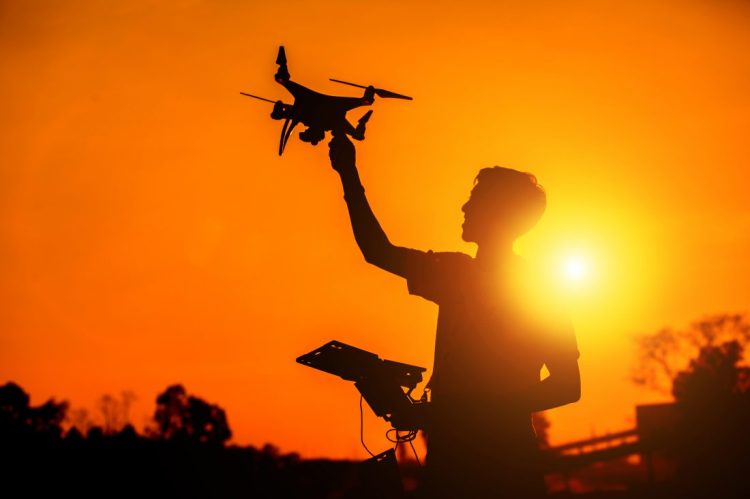Technology stands ready to change our world more completely than perhaps we’re ready for — and drones may well lead the charge.
Don’t be fooled by the drones you can buy today. Many of them are little more than glorified toys for adults. If you’re interested in drones, but you’ve been holding out, you’ve likely noticed that the whiplash-fast innovation in this field delivers ever-more-impressive consumer-level drones to market on a regular basis. So what’s coming up next?
Below are five of the most impressive automated drone innovations worth getting jazzed about today. Are you ready?
1. Automated home surveillance
One of the first and most obvious applications of early consumer-level drone technology concerned aerial photography and reconnaissance. Who doesn’t want to fly a miniature personal aircraft to get a new view of one’s property or community?
June 5th: The AI Audit in NYC
Join us next week in NYC to engage with top executive leaders, delving into strategies for auditing AI models to ensure fairness, optimal performance, and ethical compliance across diverse organizations. Secure your attendance for this exclusive invite-only event.
Now a company called Alarm.com is taking that early concept to an exciting new place by introducing the notion of home security via automated drone.
There are already products on the market that can follow and observe the operator or another target with minimal user input, but this is the first time we’ve seen the concept applied to home security. The company promises that its Insight Engine will study your household’s habits and patterns using machine learning and learn to look for anomalies.
If there’s a kerfuffle somewhere on your property, the near future will see a drone or two — or even a small swarm — lifting off from our yards to investigate.
2. Peace of mind for bicyclists
The world generally isn’t a friendly place for cyclists. Between the slow adoption of bike lanes in cities and the aggression level of some motorists, bikers often feel unprotected.
But not for much longer, if drones have anything to say about it.
Cyclists will soon be able to pair their smartphone with an automated drone that can follow behind them or travel ahead while they’re biking. Lights on the drone could flash to inform the biker of upcoming threats and obstacles, and cameras could capture footage in the event of an accident, in case fault ever comes into question.
3. Automation of daily chores
It’s not surprising to find the most influential companies in modern manufacturing getting involved in the drone industry. Ford was one of the latest to do so when it unveiled its brand-new robots and artificial intelligence division.
The initiative sees Ford partnering with a number of noteworthy companies and startups, including Nirenberg Neuroscience and Civic Maps. Ken Washington, Ford’s CTO, was tight-lipped on details but indicated that “first- and last-mile travel” is the focus for the burgeoning drone efforts.
For the consumer, this means flying vehicles that require no human guidance for the vast majority of their flight. Ford could soon begin producing aircraft that can perform all manner of humdrum tasks we don’t want to do, like walking our dogs, hovering an umbrella over our heads, or retrieving small items from nearby locations.
4. Supply drops for the stranded
When you hear the phrase “mountain rescue,” do you picture a huge St. Bernard with a little barrel of brandy tied to his collar? It’s time we brought this image into the current millennium.
While some commercial drones seem to solve problems that don’t exist yet, others might address a real need — and even save some lives. For every level of outdoors enthusiasts, hikers, or backpackers, from novice to veteran, peace of mind in the backcountry doesn’t come easy.
The buddy system is a great place to start. But what about a buddy drone?
Picture it: You’re out hiking by yourself and you hurt your leg. You can’t limp away to find help. What do you do? In the near future, it may be possible to activate a GPS beacon on your person and summon a drone to your location. It could carry tools, food, or medication and alert rescuers or authorities as it does so.
5. Flying taxis
We thought we’d save the best automated drone concept for last — or at least the most fanciful. We’re used to hearing about drones carrying cameras and delivering small objects, but what about people? It’s a vision shared by many companies in the tech world, and new efforts to test the technology in 2017 see it inching ever closer to reality.
You probably won’t be surprised by the anticipated price tag. When they finally hit the market, a drone capable of carrying a person will cost around $300,000. It’ll also have a starting range of just 23 minutes per battery cycle, though that will almost certainly improve with time.
Still, like everything else in the tech world, the craziest innovations start out prohibitively expensive and eventually reach a pleasing compromise between price and capability that make them accessible to the consumer. Drones have been holding to this familiar pattern so far and will almost certainly continue to do so.
Just as nobody honest can claim to have foreseen the iPhone in the days of room-sized computers, the current state of the drone market will look paltry and primitive in just a couple years.
If the innovations we’ve already seen are any indication, we’re in for a wild ride.
Kayla Matthews is a technology and energy IT writer whose work has appeared on Motherboard, MakeUseOf, and Triple Pundit.


